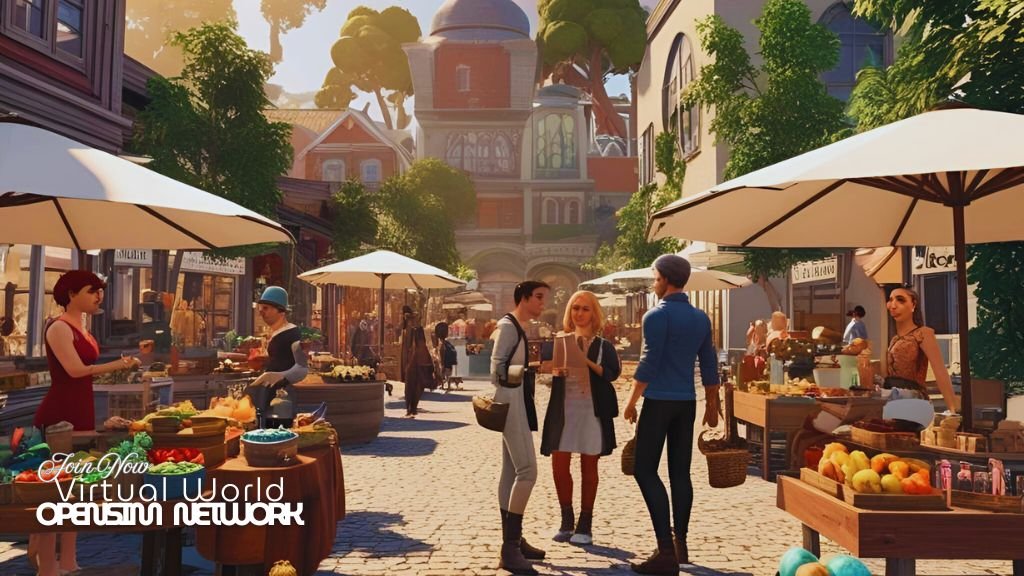Former White House Photographer Pete Souza Says Trump Photostream a ‘Reality TV Show’

Pete Souza, former Chief Official White House Photographer for Presidents Ronald Reagan and Barack Obama, describes President Trump’s presidential photo stream as “an Oval Office reality show” in a new article on Vanity Fair.
No stranger to controversy or butting heads with President Trump, Souza has been a vocal critic of Trump during both of his terms. Souza’s Vanity Fair article certainly reflects his views toward the President. Nonetheless, Souza is as much an authority on presidential photography as there is and has significant respect for the position and presidential photographers who came before and after.
“Yoichi Okamoto, Lyndon Baines Johnson’s chief official White House photographer, set the bar high for visually documenting the presidency,” Souza writes.
“LBJ gave Okamoto unprecedented access to his private moments and public events because he knew the importance of having a visual archive for history’s sake. Looking at Okamoto’s behind-the-scenes photographs, 60 years later, puts us back in the room. They show us what was really going on. His images give us context. They show emotion. And humanity.”
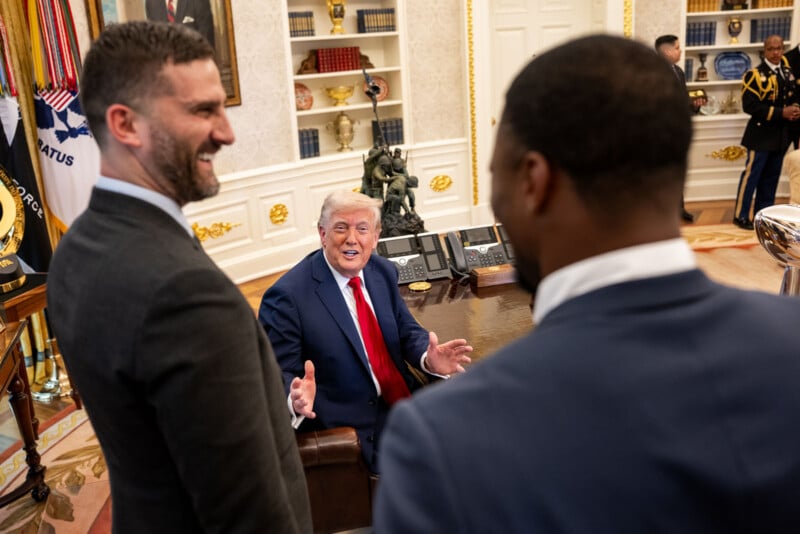
Souza remarks that he was allowed to photograph all head-of-state calls under Obama.
“You might say, ‘What’s the big deal? It’s just a picture of a guy on a phone.’ But photographs can show the mood and emotion during such a high-level conversation. A photograph can show where the call is taking place. A photograph can show who else is in the room. These visual elements are crucial for the record,” Souza writes for Vanity Fair, emphasis his.
Souza describes that every official White House photographer since, including himself, has tried to reach that same standard Okamoto achieved in the 1960s.
“This is true of photographers for both Democratic and Republican presidents,” Souza adds. While disgraced President Richard Nixon limited his chief photographer, Ollie Atkins’, access during the Watergate scandal, that was an aberration — at least until recently.
On January 6, 2021, during the insurrection at the United States Capitol, then Official White House photographer Shealah Craighead was barred from the room, unable to document President Trump while he watched the events unfold. Craighead testified under oath before the January 6 congressional committee that she was not allowed to do so despite wanting to capture photos.
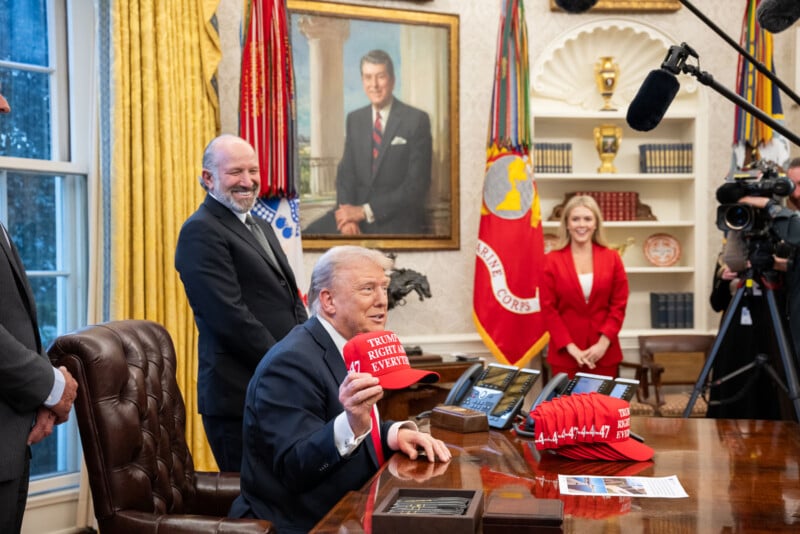
Souza characterizes this same attitude toward documenting historical moments — or rather, not documenting them — as persisting into Trump’s second presidency, noting that of the nearly 3,000 photos on the White House Flickr photostream from Trump’s first four months in office, there is a lack of important moments on display in favor of photos that “often look like part of the reality show.”
While noting the photographic acumen and skills of Trump’s official photographers, two of whom Souza knows personally including one who worked under him during the early days of the Obama administration, Souza says official photos show “little hint of the president’s humanity, and even when there is, there’s an oddity to it.”
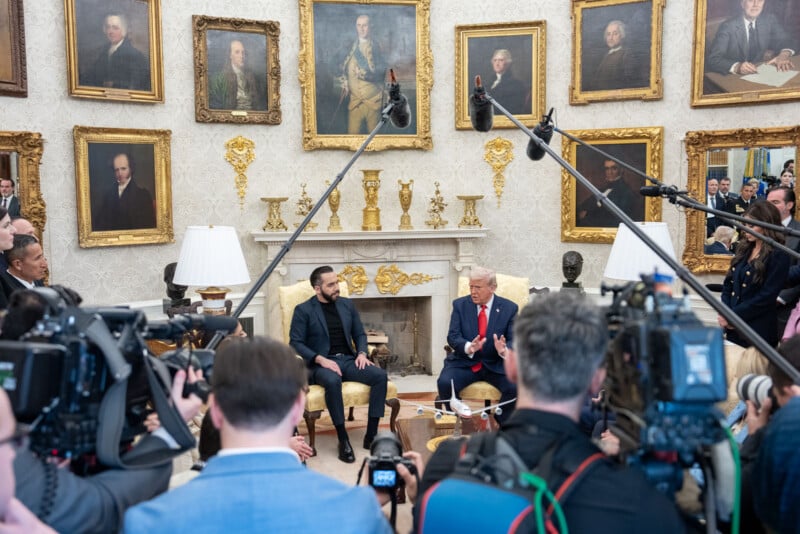
“But it’s a bit unsettling to look through the nearly 100 albums on Flickr. It’s like looking at the set of a reality TV show, starring Donald Trump. The Oval Office itself has been ornately decorated in a style akin to that of his Mar-a-Lago estate. There is gold everywhere, even gold coasters branded with his name. Rather than selecting two or three paintings to place around the fabled fireplace—where many official encounters are photographed—Trump has chosen to hang more than a dozen gold-framed presidential portraits,” Souza writes.
However, he notes that more than what is on display in official White House photographs, what is not seen is even more important.
“From my years working in the West Wing, I know that any given day has the potential to yield images of significance,” Souza says.
“And as I’ve monitored the recent output of pictures, it is clear to me what the White House is not showing. Thus far on the Flickr photostream there are no pictures of Trump during national security meetings in the Situation Room. There are no pictures of Trump’s substantive phone calls with Vladimir Putin. There are no pictures of Trump with his national security adviser, Mike Waltz, in the aftermath of the Signal-chat scandal.”
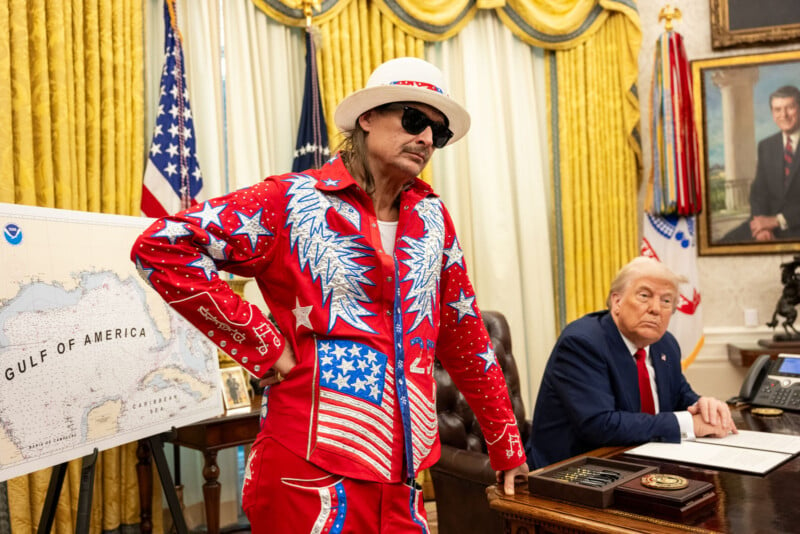
“At the end of the Trump administration, convention dictates that the official White House photostream will be locked and become forever viewable, just as we’re seeing it now, under the propriety of the National Archives. In 60 years, I wonder what people will think as they look back at these albums of photographs,” Souza concludes. “That’s assuming the National Archives still exists.”
While there is little doubt that there is a personal conflict between Souza and President Trump, it is also evident that Souza has significant respect for the importance of official White House photographers. They document and preserve history, small and significant moments alike; a key part of a photographer’s ability to do so is access to the President. Carefully curated photo ops may have political value, but the moments of humanity when a sitting President makes hard decisions have timeless historical relevance.
As Souza describes, Okamoto’s standard-setting work showing President Lyndon B. Johnson during his good times and setbacks is equally important.
“Because all of it history,” Souza writes.
Image credits: The White House
Source link

